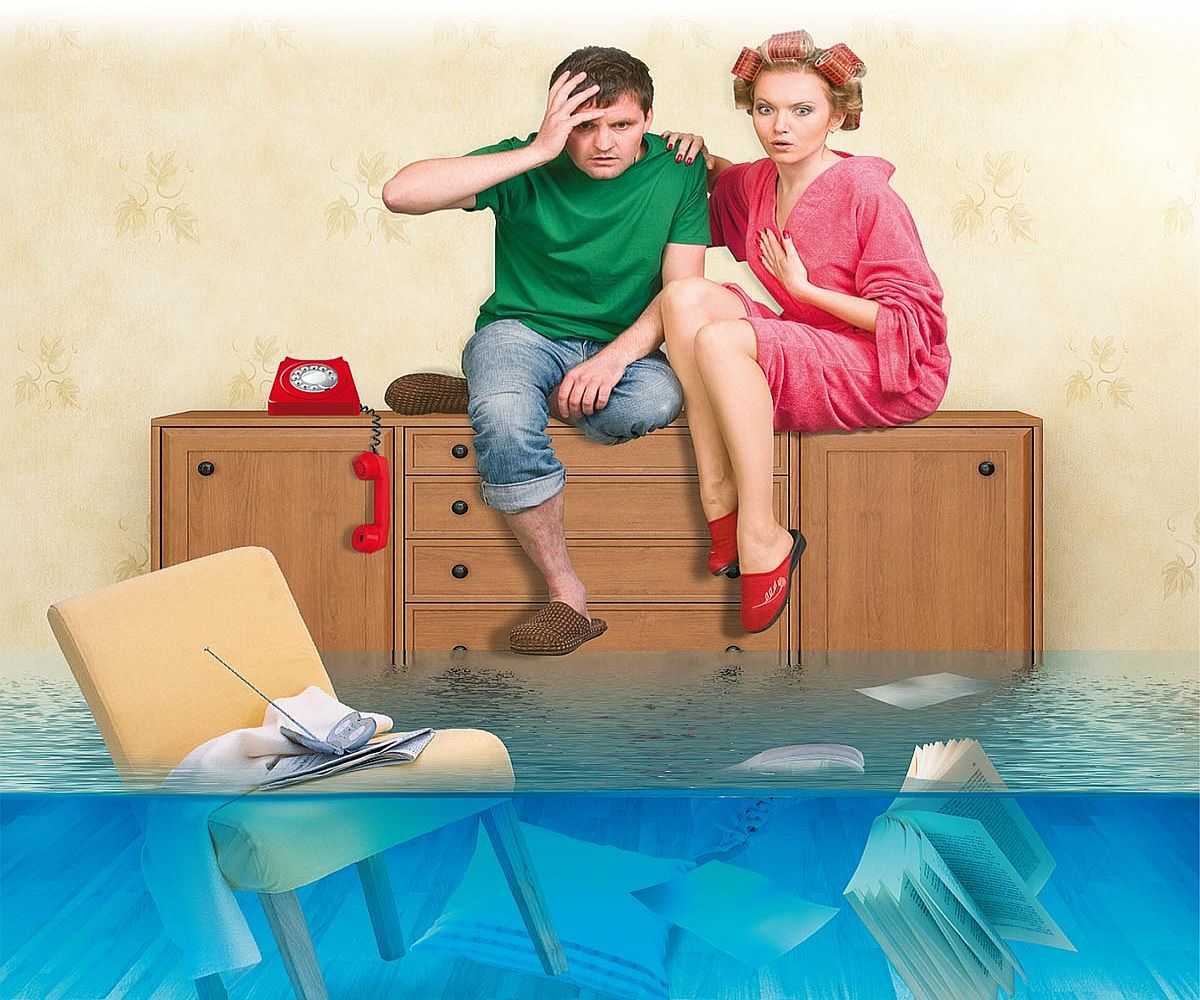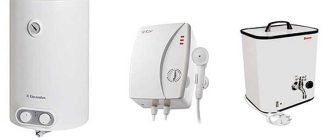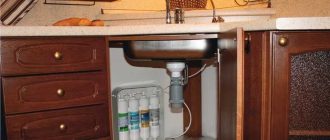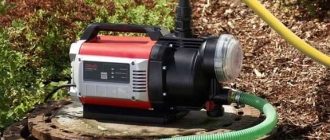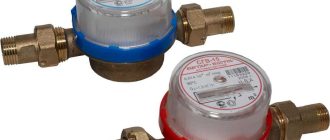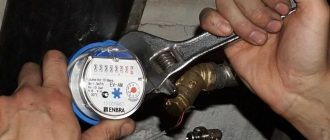Plumbing emergencies are every homeowner’s worst dream. In a house or in an apartment, it is equally unpleasant and costly. Only in the case of an apartment is added the need to talk to the neighbors downstairs and the cost of repairing their damages. But here the situation is better in the sense that even if you are not at home, the neighbors from downstairs will get the water shut off as soon as they notice signs of flooding. In the case of a private home, threatening to leak equipment is usually in low-popularized places – in basements, specially equipped pits. While the owner decides to visit the equipment can come to the pool. Here to avoid such situations and need protection from water leaks. Although this equipment is not cheap, it is becoming increasingly popular. The cost of its purchase and installation is many times less than the losses that a flood can bring.
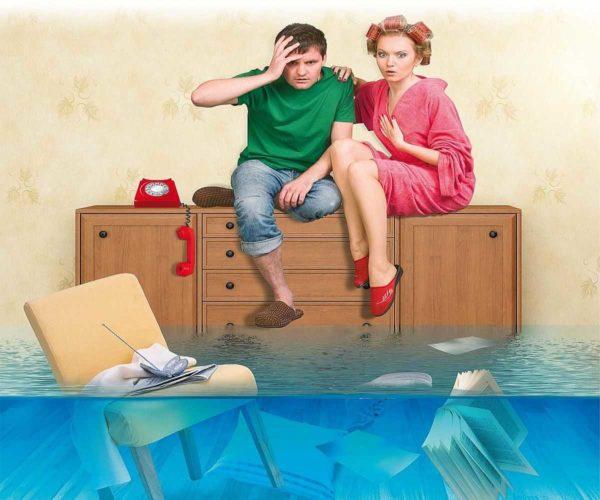
Straipsnio turinys
What is an anti-flood and how does water leakage protection work?
An anti-flood system consists of several elements: water sensors, electrically operated faucets or valves, and a control unit. Water sensors are placed at the most likely leakage points. Valves with an electric actuator are placed on risers with water, in key places of the water supply and heating system – to minimize the amount of spilled water in case of an accident. The valve actuators and sensors are connected to a control and management unit (controller). It processes the signals from the sensors and, in the event of an alarm, energizes the taps. The taps are actuated, cutting off the water/heat flow. Here, in brief, is how water leakage protection works.
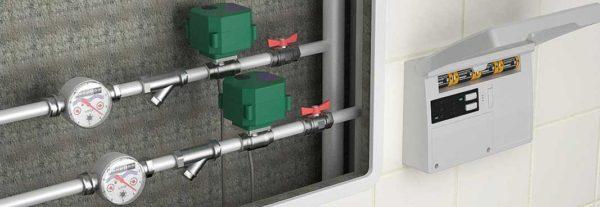
These systems are used both for hot and cold water supply and for heating. After all, an accident in the heating system is probably even worse than in the water supply – hotter water causes more damage and can also cause serious burns. In general, in order for flood protection to be effective, you need to think carefully about where to install sensors and faucets.
Where to place the sensors
Since water leakage protection is designed to protect against flooding, sensors should be placed in all places where water is most likely to appear. It often happens that the system is delayed due to the wrong location of the sensors. While the water reached the sensor, a lot of water was poured out. Based on the experience of the owners, we can recommend the following locations for installing water leak sensors:
When installing water leak sensors, try to position them so that the water gets to them first. For example, to monitor the faucet in the kitchen, put the sensor not under the cabinet, but in the cabinet – under the siphon or somewhere in that area. If something happens to the supply line to the faucet, the water will first be in the cabinet and only then will flow under it.
If you need to control leaks in household appliances – washing machine, dishwasher – put sensors under the appliances. Not next to each other, but directly near the connection point of the drain hose.
Where to place taps/valves with an electric actuator
With the installation of taps is not all simple. Specific places of installation depend on the device of the system. If it is a small apartment with one or two risers – cold and hot water – everything is simple. We close off the outlets and that’s it. In more complex systems have to think about the place of installation of electric valves.
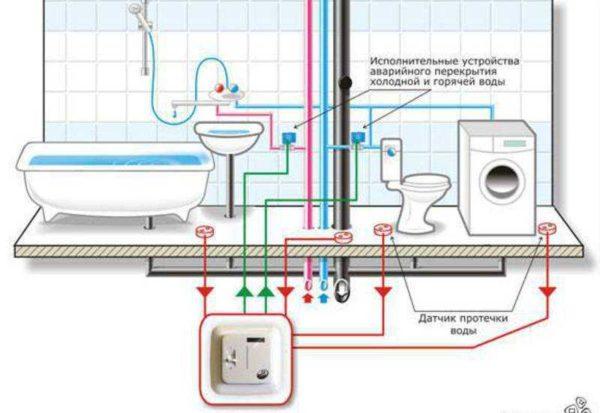
In apartments
If the water supply is centralized, taps of the system against leaks are placed at the inlet to the apartment / house. It is much better if the taps are placed before the meter and filter. However, the maintenance authorities may not agree with this arrangement. They usually demand that the tap should be placed after the meter. In this case, in case of leakage, the connection point between the meter and the filter will always be pressurized. It will be impossible to eliminate the leakage at these points. You can insist on your point of view, but you have to prove your point of view.
Tip! Before installing a leakage protection system, contact your management company and find out whether there will be problems with sealing the meters if you install electrically operated taps in front of them.
In some layouts there may be four risers in the apartment – two cold and two warm water. In this case there are two solutions – more correct and more economical. The correct one is to put two modules, each of which will serve its own zone. This is more convenient, because the accident will occur only on one of the risers / devices and to disconnect the opposite part is unreasonable. But two modules are double the cost. To save money, you can put one control unit, which will shut off the valves on 4 risers. But in this case, do not forget that you will have to pull the wires through the entire apartment.
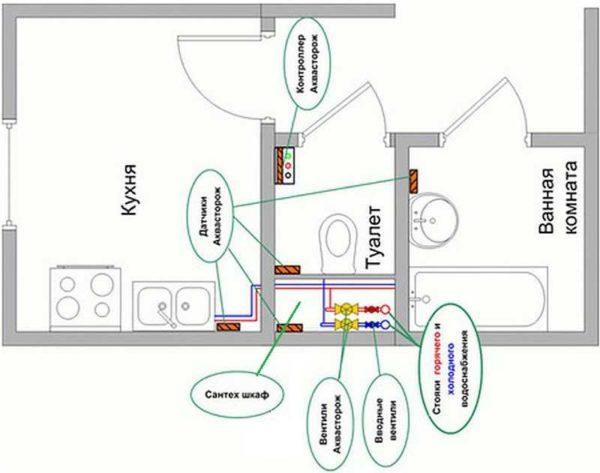
In the case of heating, too, not everything is far from simple. In most multi-storey buildings is made vertical distribution. This is when in each (or almost in each) room is a riser and from it feed one or two radiators. It turns out that on each branch it is necessary to put at least one tap – on the supply. But then the water contained in the radiator and pipes will flow out. This is certainly not so much, but a couple of liters are sometimes enough to make the neighbors below have a stain on the ceiling. On the other hand – to put two taps on each radiator – too costly.
In a private house
To prevent the pump from pumping water in case of an accident, it is necessary to use a water leakage protection controller with a power relay. If power to the pump is supplied through the contacts of this relay, at the same time as signaling the closing of ball valves or valves, the power to the pump will be cut off. Why not just turn off the power to the pump? Because if you do, all the water that is in the system can pour out into the resulting gap. And that’s usually quite a bit.
To understand in which places of the water supply system of a private house you need to put taps to prevent water leaks, you need to study the scheme. Most often put shut-off valves with electric actuators after the pumping station and on the boiler.
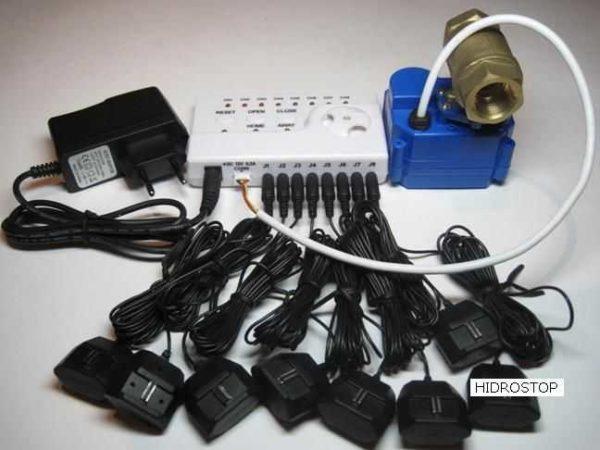
Heating is a bit more complicated. It is not necessary to shut off the flow of coolant if it is impossible to immediately extinguish the boiler. That is, in systems with solid fuel boilers to put water leakage control can only if it will not cut off the circulation of the coolant. If there is a small circulation circuit, it is possible to install valves so that this small circuit works, and the rest of the system is disconnected. If there is a thermal accumulator in the system, it is necessary to install the valves so that the water does not spill out of it. These are large capacity tanks – at least 500 liters, and usually many times more. If all the liquid spills out, not much will not show.
In heating systems with automated boilers, taps can cut off circulation. If the water leakage protection is triggered and cuts off the circulation, the boiler will stop overheating. This is not exactly a normal situation, but it is not an emergency.
Some technical points
Wired sensors are usually supplied with cables that are 2 meters long. Motorized ball valves are also sold with the same cable length. This is not always sufficient. You can extend the length by using the manufacturer’s recommended cable. The brands are usually specified in the operating instructions. Only when buying, check the cross-section of the conductors. Unfortunately, very often the actual diameter is much smaller than the declared one.
In general, we can recommend the following cables for extension:
- for wired sensors, a shielded twisted pair with a core cross-section of at least 0.35 mm² is suitable;
- for cranes, a power cable in double-layer insulation with a core cross-section of at least 0.75 mm².
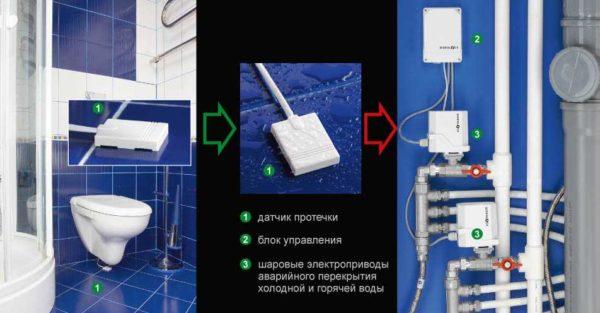
It is desirable to make the connection serviceable. That is, if you lay the wires in the wall or in the floor, the connection should be made in a junction box. Connection method – any, reliable (soldering, contactors of any type as the equipment is low-precision). It is better to lay wires in the walls or in the floor in cable channels or pipes. In this case, it will be possible to replace the damaged cable without opening of the pipes.
Water leakage protection: parameters and selection criteria
Determine the number of sensors and stopcocks is not so difficult, especially since many systems easily allow you to expand the area of control. It is important only not to exceed the maximum allowable number of equipment. But it is much more difficult to choose the manufacturer – you can not change it. Below we will present the most popular systems on the Russian market: “Akvastorozh”, “Neptune” and “Gidrolok”.
Maitinimo šaltinis
To begin with, let’s consider how the power is supplied to the different parts of the flood protection system:
- At the control unit, the voltage must be constant.
- Electrically operated valves are powered only for the period of operation – maximum – for 2 minutes (Hydrolok).
- Wired sensors are energized only for the period of status polling (very short time).
- Wireless sensors operate on batteries.
Protection against water leaks can work from 220 V, 12 V and 4.5 V. Generally speaking, the safest power supply is 12 V or lower.
Types of power supply
Some systems are built in such a way that the control unit is powered from 220V, and a safe voltage of 12V or less is supplied to the electric taps and sensors. In other variants, 220V may be supplied to the cranes (some of the Neptune variants). The voltage is applied briefly – only at the moment when it is necessary to shut off the water. This happens after the detection of an accident and periodically – to check and maintain the performance of the system. At all other times the taps are de-energized. Which option suits you better is up to you.
Also pay attention to the availability of a backup power source. If you have your own redundant power system (batteries, generator), this parameter can be omitted. Otherwise, the presence of a backup power source is very desirable. And it is necessary to look at how long the equipment can operate in stand-alone mode. In this sense, much more practical systems operating from 12 V: if desired, you can install a battery with suitable parameters and thereby extend the performance of the system in stand-alone mode. Although, some systems (Hydrolok, for example) on backup power (rechargeable batteries) can work up to a year. During this time, electricity will definitely turn on…..
Cranes with electric drive: which are better
Immediately spell out that there is protection against water leaks on the basis of valves and ball valves. More reliable are ball valves. They cost more expensive, but work many times more reliably. When choosing, take the one that has ball valves shutting off the water, not valves. That’s a no-brainer.
But ball valves also come in many forms. Here are the requirements they must meet:
- Made of brass or stainless steel. From these metals should be the bodies, stems and locking balls. Only in this case they will serve for a long time.
- Valves are full bore. This means that in the open state, the cross-section of the valve is not less than the cross-section of the pipe on which it is installed. In this case, they do not interfere with the flow.
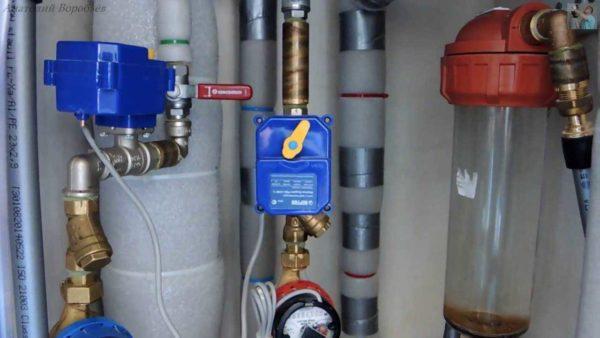
All market leaders – Akvastorozh, Hydrolok and Neptune – use only such valves. They can be produced by different firms, but are made of quality metal. If cheaper sets do not specify the material or type of valve (full-bore or not), it is better to look for something else.
Durability and closing time
We must also talk about the parameters of electric actuators. How reliable and durable they are depends on how reliable the water leakage protection is and how operable the system is. Therefore, the gearbox and gears of the actuator must be made of strong and reliable material. The strongest material that can be used here is metal. If we talk about the most famous systems, on this point the following situation is observed:
- In the Hydrolok system, the gears and pinions are made of metal.
- At Aquastorozh gears are made of metal in the latest versions of the system, the gearbox remains plastic.
- Neptune about the materials of the drive is not distributed.
Another important characteristic is such a characteristic as the closing time of ball valves. Ideally, the faster the water supply is shut off in the event of an accident, the better. Here is the undisputed leader Aquastorozh – ball valves are closed in 2.5-3 seconds. But such speed is achieved
- installation of additional gaskets, which reduces the friction of the ball, but increases the risk of leaks;
- a small torque, and the small force applied when closing the valve, can turn out that if a foreign object (sand, scale, etc.) or when overgrowing with salts, the valve simply will not close.
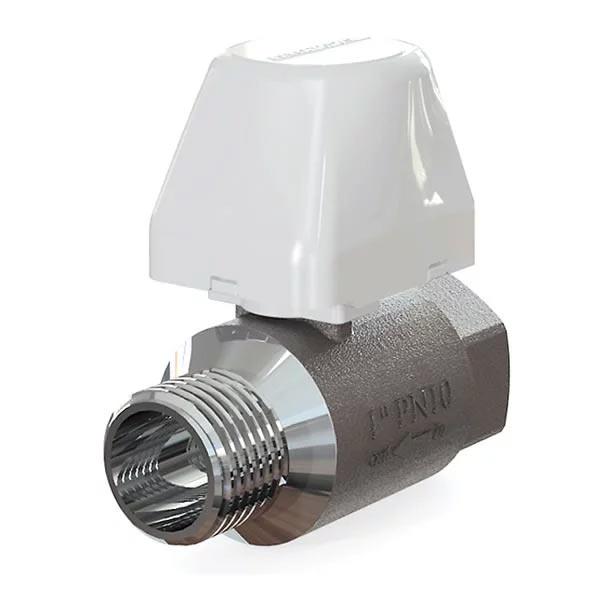
Closing force and manual mode
If we talk about the magnitude of torque, here in the leaders of water leakage protection Hydrolok. Its electric actuators can develop a force of up to 450 kg/m. This is a very large figure, but such parameters are in large-section valves, which are not used in apartments and houses. Nevertheless, half-inch and inch are also very powerful – can develop a force of up to 100 kg/m. Moreover, the applied force increases in steps – if necessary, it increases from nominal to maximum.
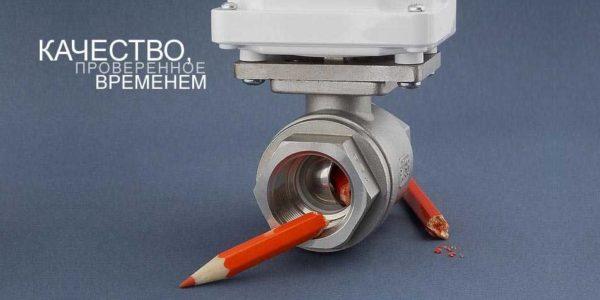
There is one more thing: the ability to shut off the electrically operated faucet in manual mode. At Aquastorozh and Hydrolok in this regard parity: you need to remove the actuator, unscrewing a few bolts (at Hydrolok – 2, at Aquastorozh – 4), then manually turn the faucet. Neptune is ahead in this regard: its actuators have a lever, turning which you manually open or close the water. But these faucets are completed with the most expensive of the sets.
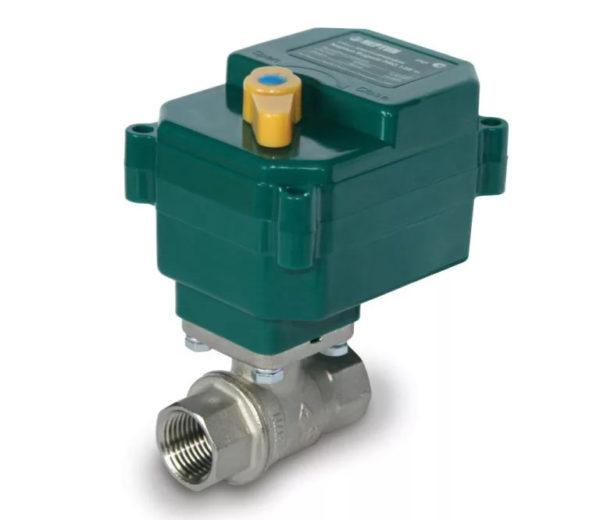

Features of the algorithm of operation
The principle of operation of any protection against water leakage is the same: when an alarm signal appears, it cuts off the water supply and turns on the alarm. In this, all systems are similar, but there are certain features that some like, others do not.
The first feature is related to the processing of signals from sensors and faucets. Some systems monitor the integrity of the wires that go to the faucets and wired sensors. In addition, if wireless sensors are present, they are polled regularly. This is all great and such systems are more reliable, but the response to a “missing” sensor or faulty wire can be different:
- the Hydrolok console lights up signaling the loss of sensors or faulty taps, but the water is not shut off;
- Aquastorozh on loss of any of the sensors or taps cuts off the water;
- Neptune monitors only the response of sensors and the alarm lights up according to the results without specifying the location.
Here everyone chooses for himself, which option suits him better. Both ways of response are not ideal, so there is no single answer.
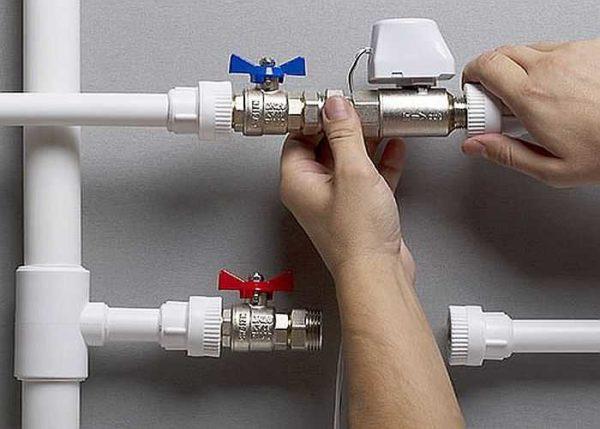
The second parameter for choosing a leakage protection system is the frequency of checking the operability of the faucets. Since our water is far from the best quality, with prolonged downtime, the locking ball can “overgrow” salts or, as they say, “stick”. To prevent this from happening, controllers periodically “move” the valves. The frequency varies:
- protection against water leaks Gidrolock (Gidrolok) tests once a week;
- any Aquastorozh controller turns the ball valves once every two weeks;
- some Neptune variants do not have this function, there are those that open/close the valves every two weeks.
Some people fear that the faucet performance checks will catch them in the shower. Of course, it is not pleasant to find yourself soaped up without water, but none of the owners have ever complained about such cases. So it is far from being as dangerous as it seems)))
Some features of popular systems
To somehow distinguish their protection against water leaks, manufacturers try to improve reliability or come up with other moves. It is not possible to systematize these features, but it is better to know about them when choosing.
Capabilities of a single unit
In different manufacturers, one control unit can control a different number of devices. So it does not hurt to know this.
- One controller Hydrolok can serve a large number of wired or wireless sensors (200 and 100 pieces, respectively) and up to 20 ball valves. This is great – at any time you can install additional sensors or put a few more valves, but not always such a reserve of capacity is in demand.
- One Akastoroz controller can handle up to 12 wired sensors. To connect wireless sensors, you need to install an additional unit (designed for 8 “Akvastorozh Radio”). To increase the number of wired – put another module. Such modular expansion is more pragmatic.
- Neptune has control units of different power. The most inexpensive and simple are designed for 2 or 4 valves, for 5 or 10 wired sensors. But they do not have a check on the performance of the valves and do not have a backup power supply.
As you can see, everyone’s approach is different. And these are just the leaders. There are even smaller campaigns and Chinese firms (where without them), which either repeat one of the above plans, or combine several.
Additional features
Additional – not always unnecessary. For example, for those who are often on the road, the ability to control cranes at a distance is far from superfluous.
- At Hydrolok and Akvatorozh realized the ability to remotely turn off the water. For this purpose, a special button is placed at the front door. Go out for a long time – pressed, turned off the water. Akvastorozha has such a button in two versions: radio and wired. At Hydrolok – only wired. Radio-button Akvastorozh can be used to determine the “visibility” of the place of installation of the wireless sensor.
- Hydrolok, Akvastorozh and some variants of Neptune can send signals to the dispatching service, security and fire alarm systems, can be integrated into the system “smart home”.
- Hydrolok and Aquastorozh check the integrity of the wiring to the faucets and their position (some systems, not all). At Hydrolok the position of the locking ball monitors the optical sensor. That is, there is no voltage in the faucet during the check. Akvastorozh has a contact pair, that is, at the time of checking the voltage is present. Neptune water leakage protection monitors the position of the valves also by means of a contact pair.
Hydrolok can be controlled by GSM module – by SMS (commands to turn on and off). Also in the form of text messages to the phone can be sent signals of accidents and “missing” sensors, broken cables to the electric valves and out of faults.
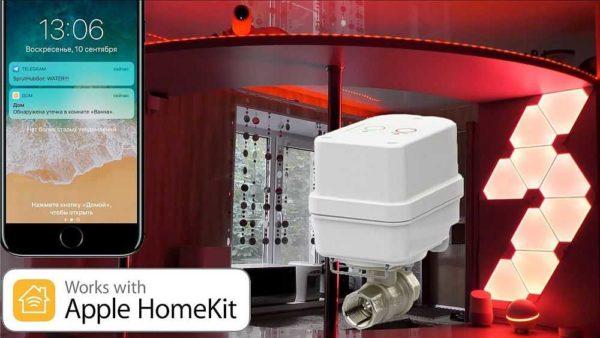
Talking about reliability: power supply and other aspects
Reliable operation is not just about the reliability of the cranes and controllers. Much depends on the power supply, on how long each unit can operate in stand-alone mode.
- Aquastorozh and Hydrolok have redundant power supplies. Both systems shut off the water before the backup power supply runs out completely. Neptune has batteries only in the last two models of controllers and then the faucets do not close when discharged. The others – earlier and less expensive models – have 220 V power supply and no protection.
- Neptune wireless sensors work on the frequency of 433 kHz. It happens that the control unit does not “see” them through the partitions.
- If the batteries in the wireless sensor “Hydroloka”, the controller lights up the alarm, but the valves are not closed. The signal is formed several weeks before the battery is completely discharged, so there is time to change it. In a similar situation, Aquastorozh will shut off the water. The battery in Hydrolok, by the way, soldered. So it is not so easy to change it.
- Aquastorozh has a lifetime warranty on any sensor.
- Neptune has wired sensors that are installed “flush” with the finishing material.
We have considered all the features of the three most popular manufacturers of water leakage protection systems. In short, the worst thing in Akvastorozh – plastic gearbox on the drive, in Hydrolok – high power of the system and, accordingly, the price. Neptune – inexpensive systems are powered by 220 V, do not have a backup power supply and check the operability of the valves.
Naturally, there are Chinese leakage protection systems, but choose them with caution.

